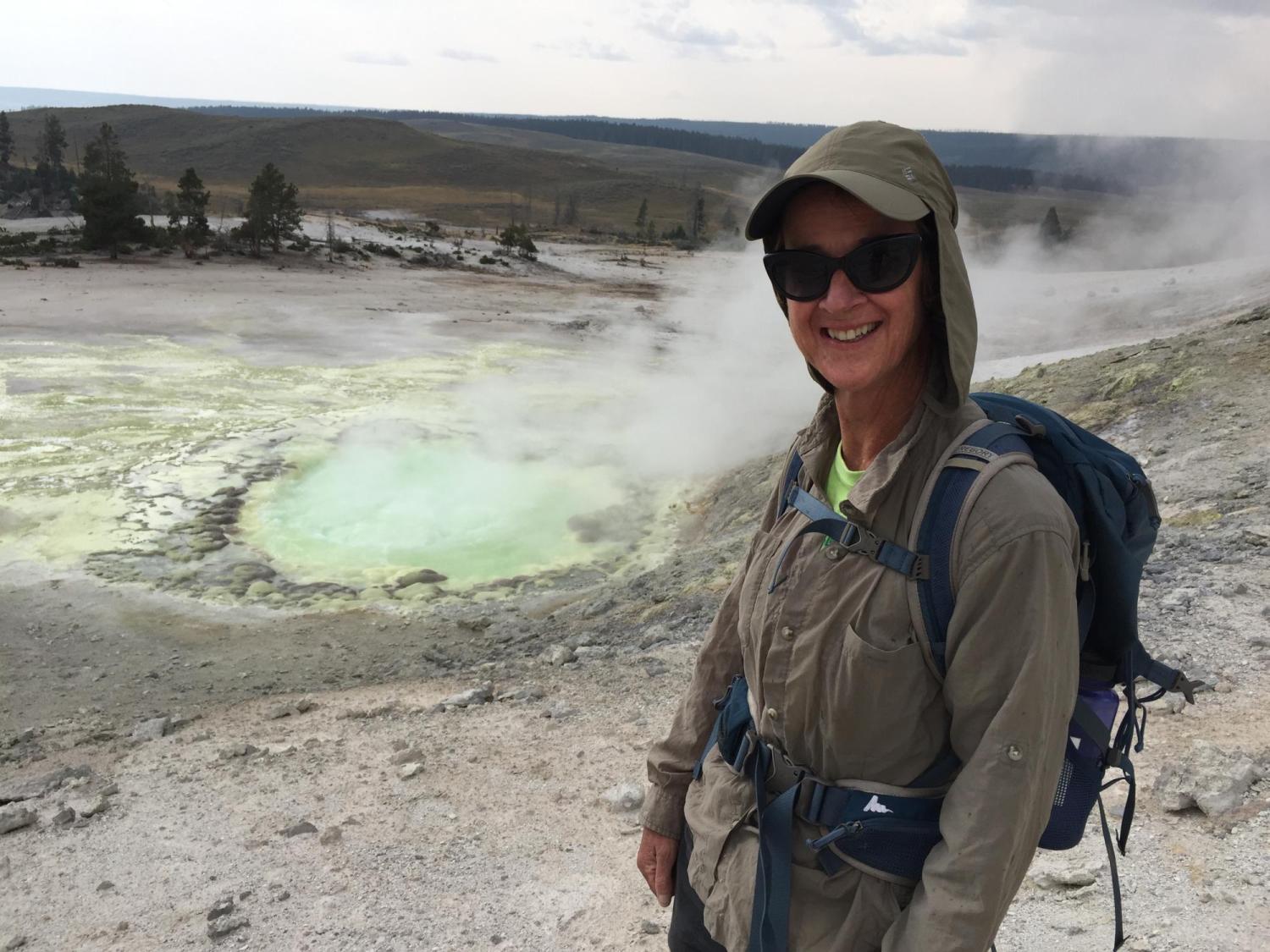
Alum Leads Study Mapping Yellowstone’s Plumbing

Carol Finn (MGeol’82; PhDGeoPhys’88) and her team of researchers are the first to use electromagnetic sensors to map the hydrothermal network — the plumbing — under Yellowstone National Park (YNP). Finn, lead author of the study’s paper published in Nature, is a research geophysicist at the U.S. Geological Survey in Denver who specializes in geothermal mapping and natural hazard assessment.
What was best about your time at CU?
My fellow graduate students. There was tremendous camaraderie, and I am still friends with many of them. My advisors also gave me a lot of freedom to pursue my research in geophysics. Plus, what’s not to love about campus?
What inspired your interest in geophysics and natural hazards?
Geophysicists use remote means to look inside the earth, similar to doctors who use X-rays, MRIs and CTs to scan the body. I love being able to reveal hidden knowledge. My first projects were using geophysical data to look for hot rock under volcanoes in the Cascade Range. This is where my interest in volcanoes started. My later work in the Cascades and Alaska in-volved looking for buried hydrothermally weakened rock on the volcanoes that might source very large landslides. Being able to contribute to the understanding of these hazards is very gratifying because the knowledge helps local communities develop mitigation strategies to save lives in case of a landslide.
What is especially interesting or important about Yellowstone?
Everything! Most people who visit Yellowstone are awed by the beauty and seeming magic of the geysers, hot pots and other thermal features. Yellowstone contains the largest number of thermal features in the world and provides an analog for geysers on other planets.
What is your data collection process?
A helicopter flies with an 80-foot-diameter loop of wire dangling above the ground. The loop sends downward repeated electromagnetic signals that create currents in electrically conductive bodies in the subsurface. The signal of these currents is sensed by the wire loop. The technique is effective in environments like Yellowstone because cold water, hot fluids and clays resulting from hot fluids passing through them conduct electricity, whereas dry volcanic rocks do not.
What are the potential applications of your findings?
Despite decades of studies, the plumbing system that links legendary surface features to deep thermal fluids beneath YNP was previously unknown. It’s important to understand how it works because there’s a lot of geological activity underneath Yellowstone. Understanding the connectivity of the plumbing system in YNP is also useful to determine whether geothermal energy extraction outside of the park might influence hydrothermal activity in the park.
Photos courtesy Carol Finn

